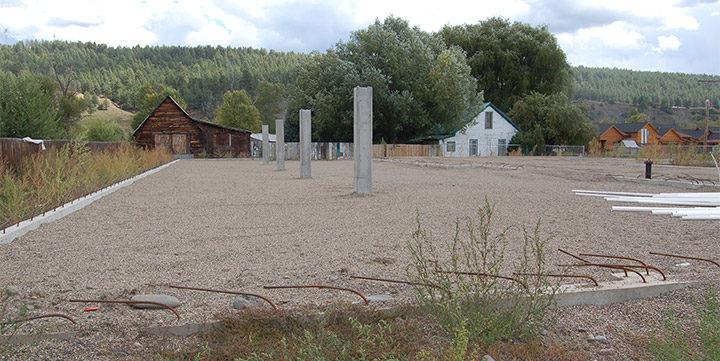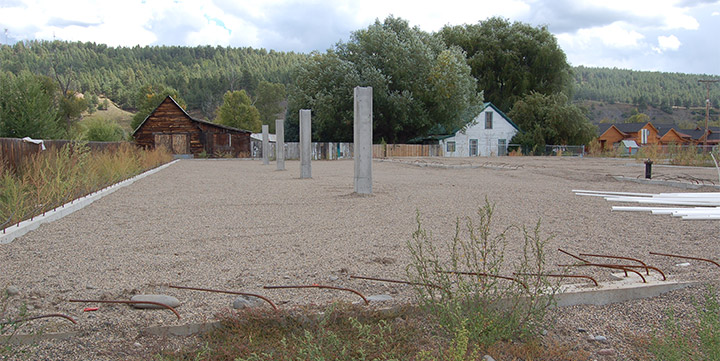WHEREAS, the Town is experiencing high rates of population growth, increased population density and increased demand for public services as a result of land development within the Town; and
WHEREAS, the construction of new developments within the Town is creating significant additional demand for and threatens the provision of adequate school, emergency, water conservation and other public services and facilities; and
WHEREAS, the demand for public services and facilities is immediate upon development of residential and commercial units even though the Town’s funding from tax revenues often accrues after the demand for services exists…
— from Ordinance 662, adopted by the Town of Pagosa Springs in June 2006
The Pagosa Springs Town Council discussed a number of items at its April 2, 2019 regular meeting.
The topic I found most interesting, that evening. was the proposed adoption of a new Impact Fee schedule, to replace the schedule adopted by a different set of Council membrs back in 2006, during a different period of Pagosa’s history. A different period for the entire nation, for that matter.
As suggested in the original 2006 Impact Fee ordinance, quoted above, the Town of Pagosa Springs was experiencing high rates of population growth and increased population density, back then.
Or… was it, really?
In 1999, the US Census Bureau had estimated the population of Pagosa Springs — the only incorporated town in Archuleta County — at 2,060 residents. That was a huge increase, in terms of percentage, over the 1990 Census count of 1,415, nine years earlier.
A dramatic, 45 percent increase.
Unfortunately, the US Census estimate in 1999 had been dramatically inaccurate, because when the actual decennial count was conducted in 2000, they found that the Town of Pagosa Springs had a population of of only about 1,562. A much less dramatic 10 percent increase. Growth of about one percent per year.
By 2006, when Mayor Ross Aragon and his fellow Council members adopted a new Impact Fee ordinance, the population of the town was about 1,634. Less than a one percent annual increase since 2000.
Meanwhile, the rest of Archuleta County — outside of the Town limits — was indeed experiencing dramatic population growth, as the Board of County Commissioners approved one suburban subdivision after another . In 1990, the total County population had been about 5,382. By 2006, Archuleta County had an estimated 12,127 permanent residents.
More than double, in 16 years. Almost all living outside the Town limits.
But the Town itself? Ordinance 662 was greatly exaggerating the facts, in an effort to justify some new Development Impact Fees.
Here in Colorado, our state and local governments cannot legally institute a new tax, or increase the rate on an existing tax, without voter approval. But state and local governments often make an end run around that constitutional requirement by referring to new taxes as “fees.” Fees can legally be put in place without voter approval, so long as the government can justify them (in court) as ‘paying for a government service provided directly to the person paying the fee.’
For example: “Development Impact Fees.” Which is, in my humble opinion, actually a tax levied only on new construction, but the Colorado courts have thus far been willing to call them constitutional.
The Town government had collaborated with the County government in 2005 in hiring consulting firm Economic and Planning Systems (EPS) to study the impacts of development on the community’s infrastructure needs, and to provide a legal framework for the imposition of these new taxes — er, I mean, these new fees. When the Board of County Commissioners received the EPS report, however, they quickly decided not to impose the suggested fees. The Town Council, meanwhile, looked at the same EPS report and promptly approved Ordinance 662.
The County — the government which seemed most likely to benefit from the new taxes (I mean, fees) — rejected the idea. The government which seemed likely to benefit the least — the Town government —put the fees in place.
This was a bit awkward for the community. In 2006, every urban planner worth his/her salt was telling us that suburban sprawl, if allowed to continue, was going to ultimately ruin your community’s financial condition — while promoting increased density within the existing urban core would strengthen our fiscal health. (The Town government heard exactly that same advice a couple of years ago, when Smart Growth America came to town and told us to stop allowing suburban sprawl and increase the density of our downtown. You can read about that report here, in an article by Town Associate Planner Cindy Schultz.)
It wasn’t unusual to see a local government put Impact Fees in place during the turn of the 21st century. Everyone else was doing it, with impunity. (Except a few governments, like Archuleta County.) But times have changed. We’re now struggling with a serious housing crisis, which some people attribute partly to quantity of new middle-class homes that were never built, between 2006 and 2019.
The composition of the Town Council has also changed — as has its attitude towards Impact Fees, apparently…

On April 2, the Council took a serious look at a new Impact Fees schedule developed by EPS. The new schedule suggested greatly reduced fees on commercial construction, but suggested that the fees on new homes could — if the Council were so inclined — be increased. Or could remain the same. Or could be repealed entirely. You can download the documents provided to the Council here. (I encourage you to enjoy reading the report, as it cost the Town taxpayers a pretty penny.)
Here’s a summary of three possible options, presented by Town Manager Andrea Phillips, (with warnings included):
1. No Impact Fees. Council has the option of repealing impact fees or adopting the new Nexus Study but setting fees at $0.00. We would caution, however, that during periods of growth, impact fees are another revenue source for capital projects. In addition, it is typically difficult for a municipality to reinstate a fee or tax after it has been eliminated. Keeping fees close to the current level also eases the uncertainty around fees, or risk of securing a building permit too soon, to later find that fees were repealed.
2. Maximum Commercial Fees; No Residential Fees. This option keeps commercial impact fees at the maximum. Due to changes in fee categories and new weighting methodologies used in the calculation of proposed new fees, adopting the maximum proposed commercial fees would result in a significant reduction compared to current fees. Eliminating residential fees would reduce total fees by $3,342 per single family unit.
3. Maximum Commercial Fees; Residential Fees at 30 Percent of the Maximum. This option sets residential fees at $3,756 per unit (for an average 1,700 square foot home), a 12 percent ($414) increase above the current fees of $3,342 per unit. Since the new residential fees are calculated on a per square foot basis, the new fees would vary by home size as shown below in Table 1. A 1,000 square foot home would pay a $2,210 residential fee, and a 2,500 square foot home would pay $5,524.
What was the Council’s pleasure?

